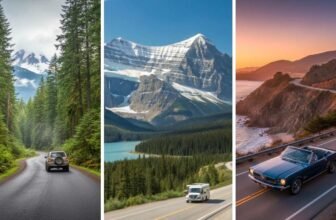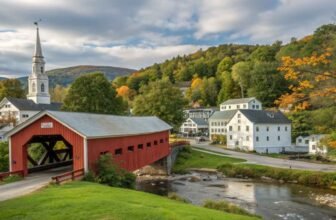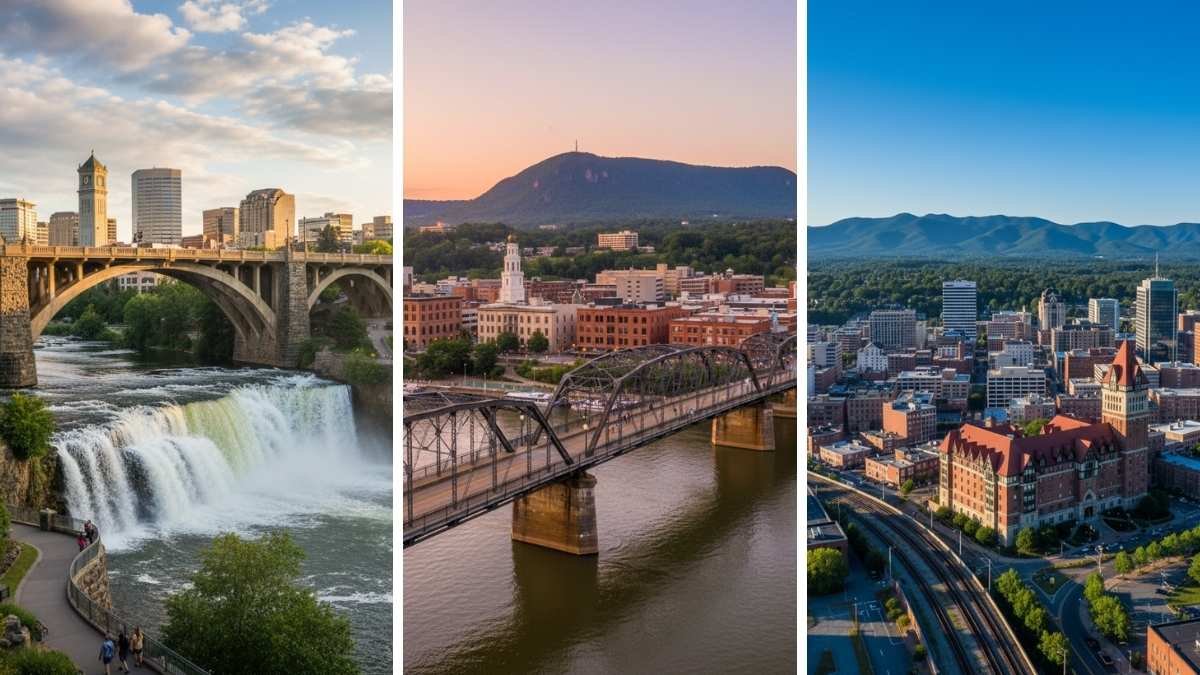
Stretching a paycheck shouldn’t mean shrinking your lifestyle. Across the U.S., there are towns where your money works twice as hard—and life feels twice as good.
Think charming main streets, mountain air that clears your head, and sunsets that don’t cost a dime. These are the kinds of places where locals still wave from porches, where great coffee doesn’t break the budget, and where beauty feels built into the price of living.
If you’ve ever dreamed of trading high costs for a high quality of life, you’ll want to see every single town on this list.
1. Greenville, South Carolina
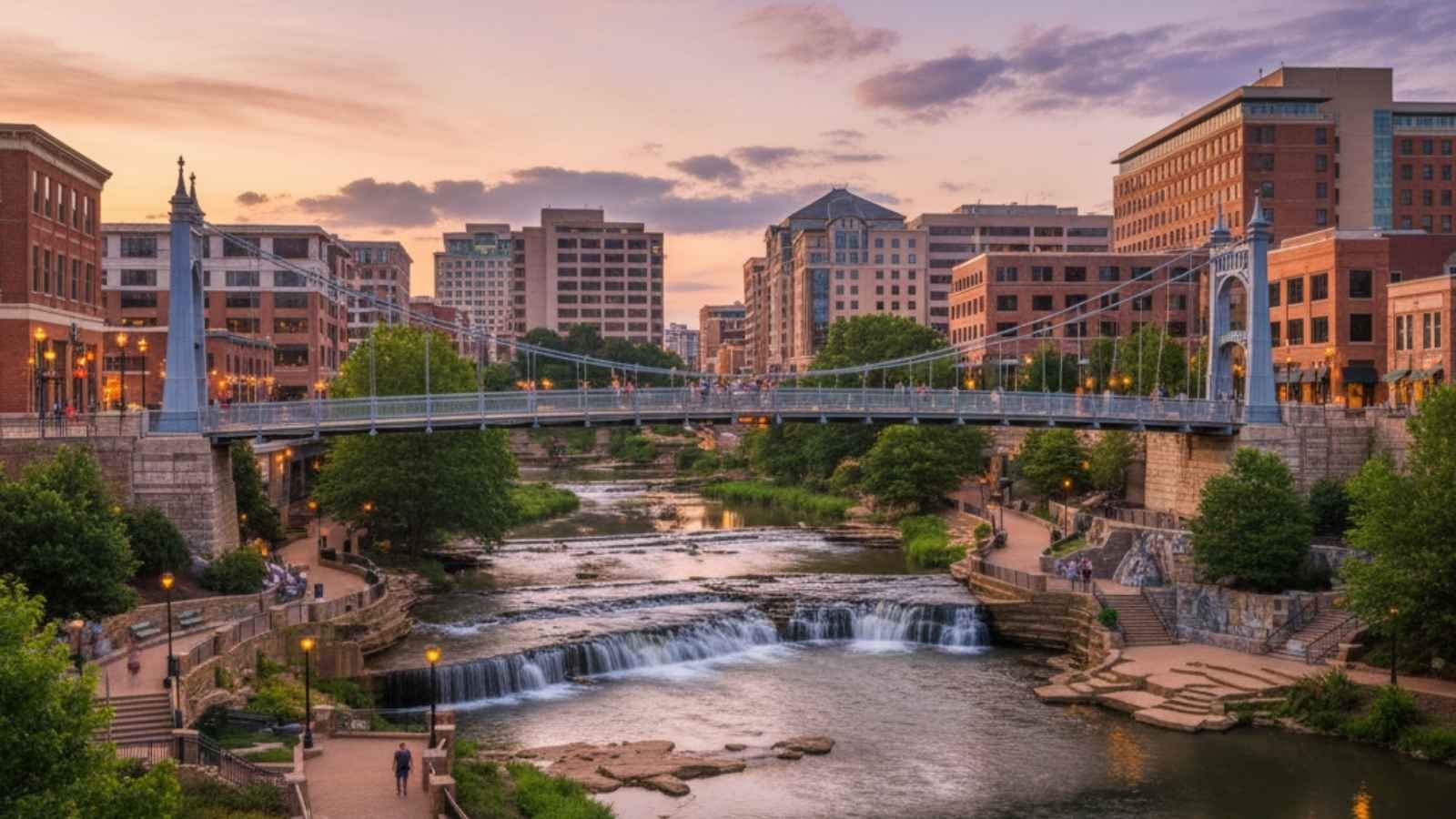
Greenville has quietly become one of the South’s most livable small cities — a blend of affordability, charm, and vibrant community spirit that feels worlds away from big-city chaos. Strolling through its revitalized downtown, you’ll find tree-lined streets, local art galleries, and a food scene that rivals much larger metros. The cost of living is nearly 15–20% lower than the national average, yet the quality of life feels high-end, thanks to its growing cultural scene and easy access to outdoor adventures in the Blue Ridge foothills.
What makes Greenville truly special is how walkable and welcoming it feels. Locals often spend their weekends biking along the Swamp Rabbit Trail, attending open-air concerts at Falls Park, or checking out farmers’ markets overflowing with local produce. Housing remains surprisingly attainable — a rarity in cities with this much appeal — and that balance between cost and experience is what puts Greenville at the top of this list.
There’s also a creative energy here that attracts remote workers, artists, and entrepreneurs. Whether it’s sipping cold brew at a tucked-away café or catching a festival on Main Street, Greenville gives you big-city perks without the price tag or stress.
Quick Facts:
- Best months to visit: April–June, September–October
- Average home price: Around $330,000
- Average rent: $1,300–$1,500 (1-bedroom downtown)
- Known for: Walkable downtown, waterfalls, art scene, and Southern charm
- Local tip: Catch the Saturday Market downtown — it’s the best mix of local eats and live music.
2. Fayetteville, Arkansas
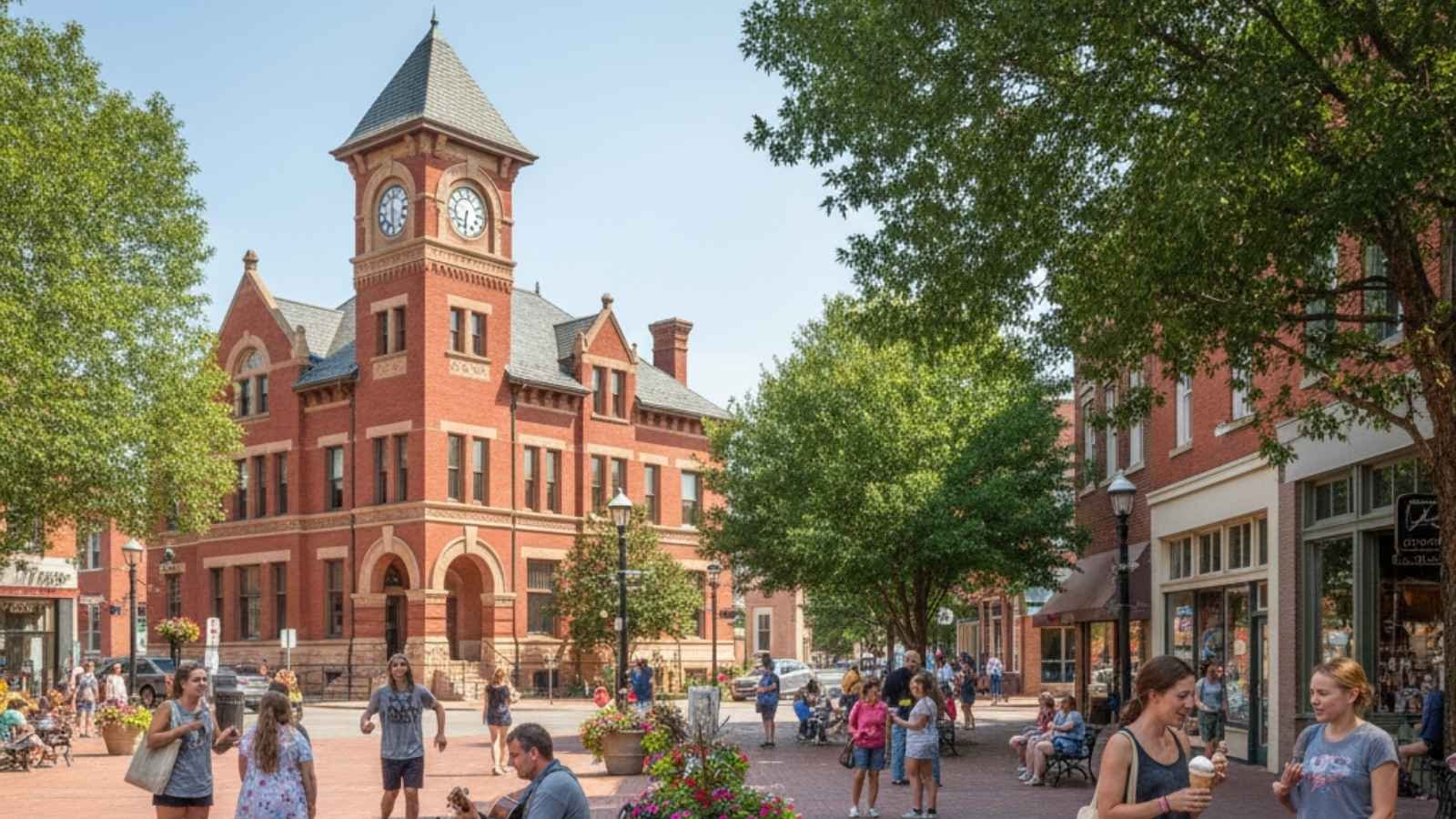
Fayetteville surprises nearly everyone who visits — it’s artsy, outdoorsy, and surprisingly affordable for the lifestyle it offers. As part of the booming Northwest Arkansas region, the town blends small-town friendliness with progressive energy, largely fueled by the University of Arkansas and a growing base of tech and creative professionals. The cost of living here is about 20% below the national average, and yet the amenities feel on par with trendier destinations.
You’ll find plenty of local quirks here — from vintage boutiques to indie music venues — and the Ozark Mountains provide a stunning backdrop for hiking, cycling, and weekend getaways. The downtown square is alive year-round with farmers’ markets and community events, giving Fayetteville that rare “everyone knows your name” energy that still feels modern.
In many ways, Fayetteville hits the sweet spot between affordability and inspiration. It’s a place where your money stretches far enough to buy comfort, but not at the expense of culture or natural beauty.
Quick Facts:
- Best months to visit: April–May, September–October
- Average home price: About $310,000
- Average rent: Around $1,200 for a 1-bedroom
- Known for: College-town vibrancy, mountain scenery, and creative culture
- Local tip: Don’t miss the fall foliage drives through the Ozarks — they’re unreal.
3. Boise, Idaho
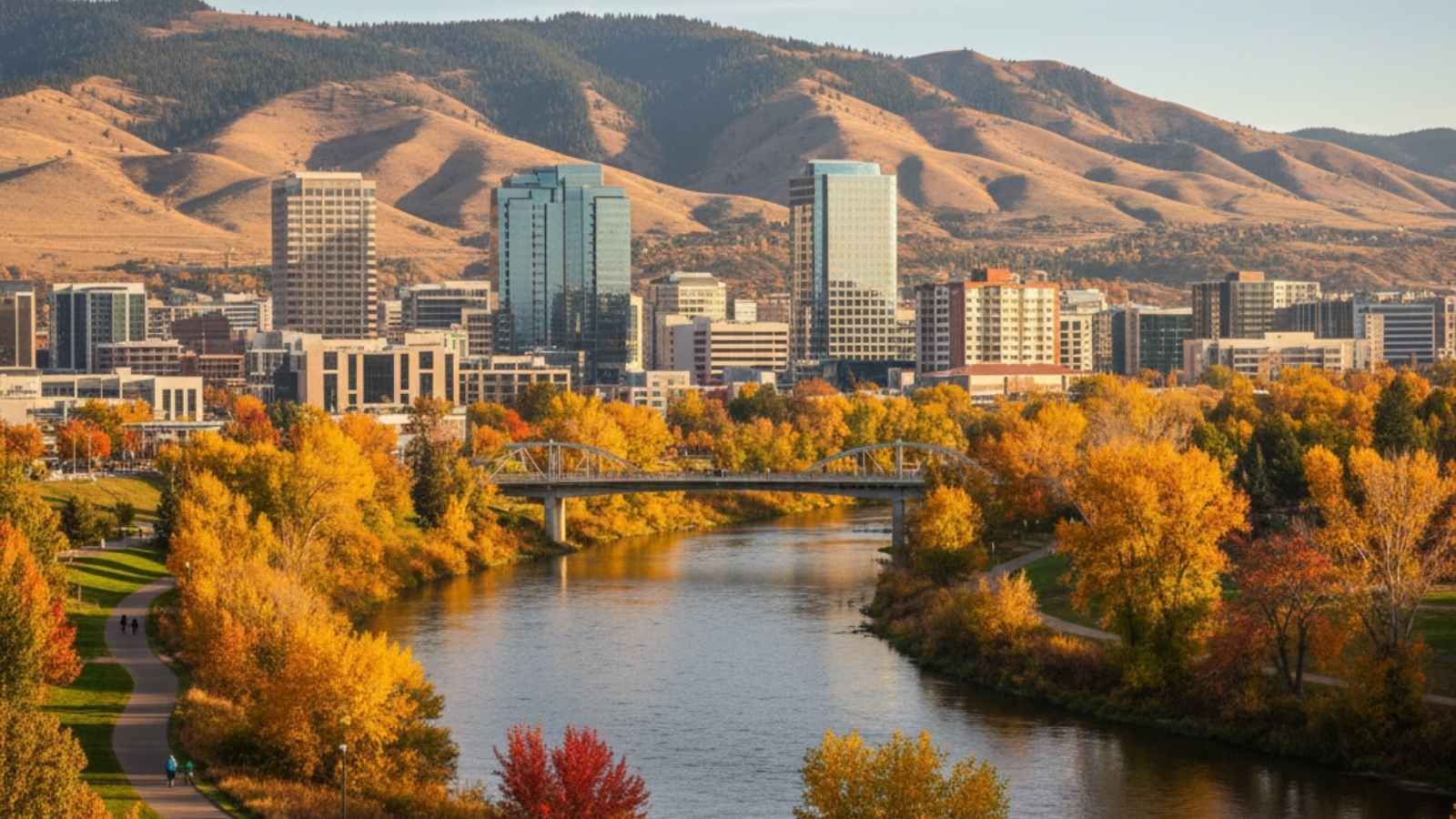
Boise has earned a national reputation for being one of the most livable cities in the U.S., and for good reason — it’s beautiful, affordable, and endlessly active. Tucked against the foothills of the Rocky Mountains, it offers a rare mix of urban sophistication and small-town friendliness. You can kayak the Boise River in the morning and catch a craft beer downtown by sunset — all without burning a hole in your wallet.
Despite rapid growth, Boise still manages to stay about 10–15% cheaper than the U.S. average in everyday living costs. Outdoor enthusiasts are spoiled here — with hundreds of miles of trails, ski resorts nearby, and a river that runs through town, it’s no wonder locals spend more time outside than in traffic.
Boise’s sense of community is another win. Locals tend to greet you like a neighbor, and there’s a refreshing lack of pretension that makes the city feel approachable, even for newcomers. It’s not just affordable; it’s genuinely livable in a way few cities manage to be.
Quick Facts:
- Best months to visit: May–September
- Average home price: About $450,000
- Average rent: $1,400–$1,700
- Known for: Outdoor lifestyle, clean downtown, and friendly community
- Local tip: Visit the Boise River Greenbelt — it’s the heart of the city’s outdoor culture.
4. Chattanooga, Tennessee
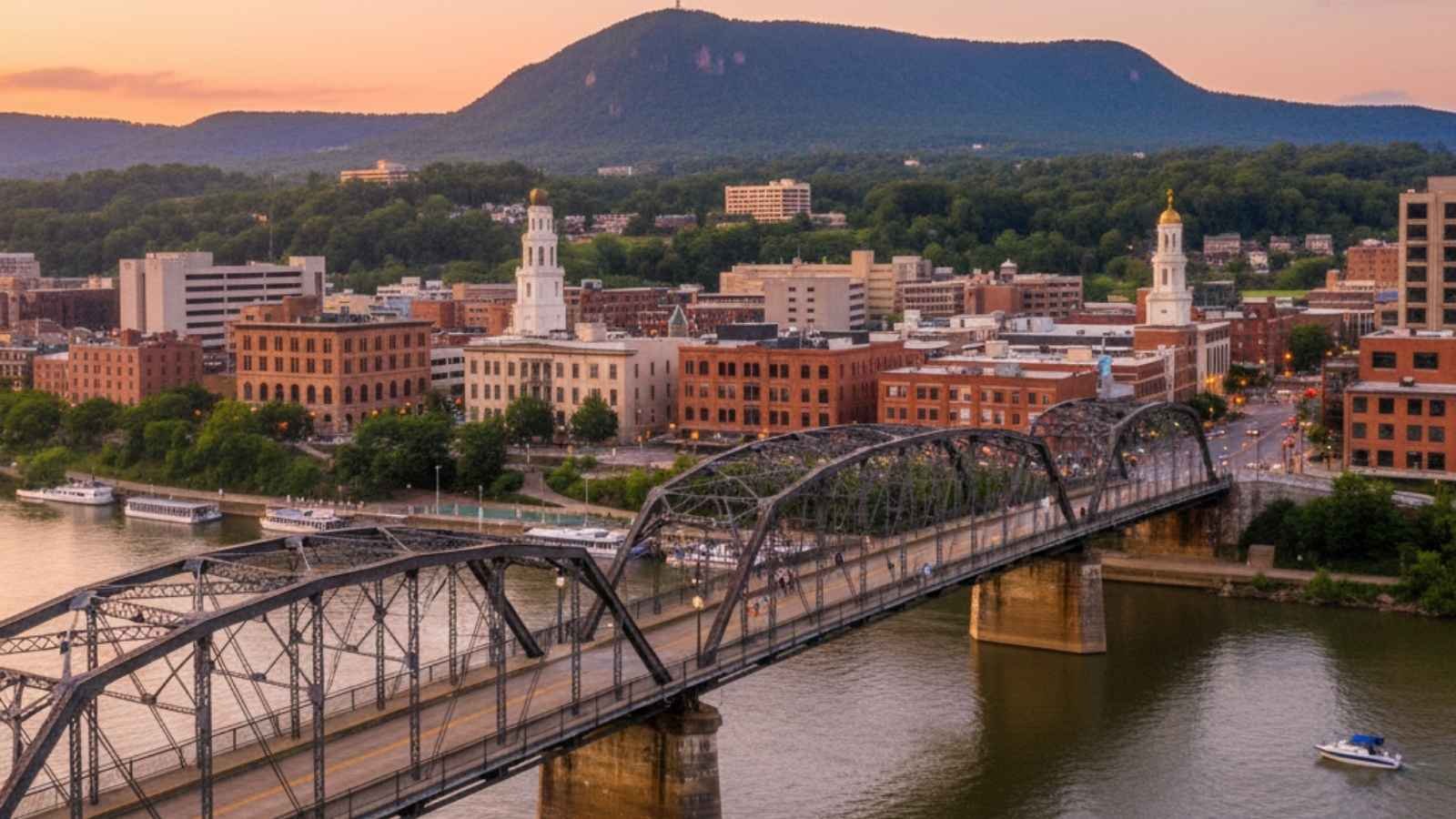
Once an industrial town, Chattanooga has reinvented itself into a model for sustainable, affordable urban living. It’s known as the “Scenic City” for good reason — cradled by mountains and rivers, it offers postcard views at every turn. Yet, the cost of living remains roughly 10–15% lower than the national average, making it easy to live well without overspending.
The downtown area buzzes with creativity — tech startups, art galleries, craft breweries, and one of the fastest internet speeds in the nation (thanks to the city’s municipal fiber network). Nature lovers also have endless options: hiking, climbing, and kayaking are practically part of the local routine.
Chattanooga’s secret weapon is its lifestyle balance. You can live near the river, work remotely with ultra-fast Wi-Fi, and still have time to unwind on a mountain trail before dinner. It’s a rare city where your paycheck goes further and your days feel fuller.
Quick Facts:
- Best months to visit: March–May, September–November
- Average home price: Around $360,000
- Average rent: $1,200–$1,400
- Known for: Outdoor recreation, tech growth, and scenic river views
- Local tip: Take the Incline Railway up Lookout Mountain — the views are next-level.
5. Duluth, Minnesota
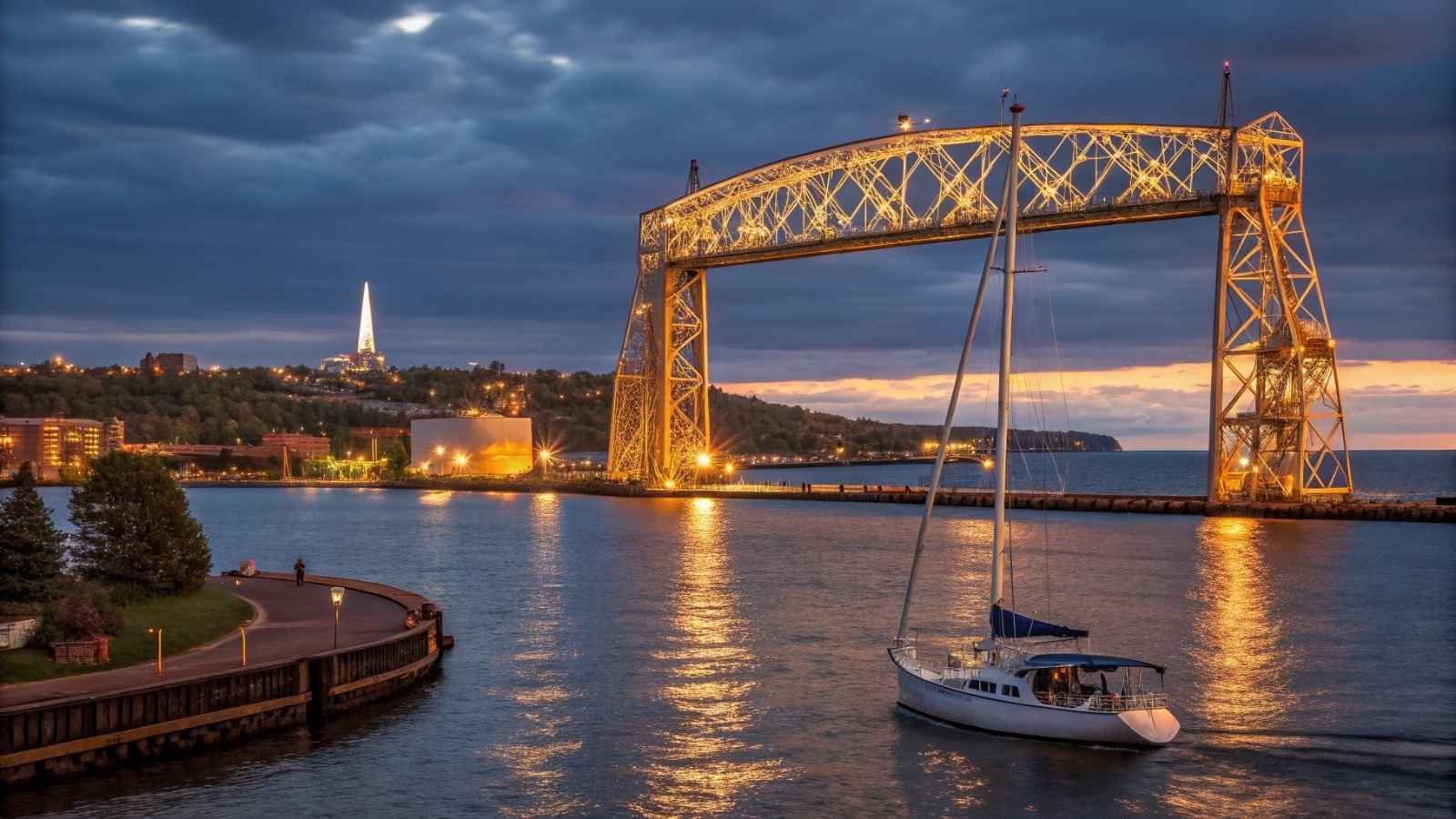
Perched on the shores of Lake Superior, Duluth is one of those underrated towns that feels like a hidden gem. With its blend of cool northern beauty, a strong sense of community, and a cost of living well below national norms, it’s an ideal place for anyone looking for a slower, more scenic life.
Life here revolves around the outdoors — from kayaking on the lake to hiking along forest trails that glow with color in autumn. The city’s arts scene is thriving, too, with locally owned galleries, indie coffeehouses, and festivals that bring the community together. It’s a place that feels both grounded and full of possibility.
What sets Duluth apart is its access to raw, natural beauty without the inflated costs of coastal living. You can buy a home near the water for a fraction of what you’d pay elsewhere, and the payoff — clean air, friendly people, and a strong local spirit — is hard to beat.
Quick Facts:
- Best months to visit: June–September
- Average home price: About $290,000
- Average rent: $1,000–$1,300
- Known for: Lake Superior views, hiking, and vibrant local culture
- Local tip: The North Shore Scenic Drive is an absolute must during fall — breathtaking views everywhere.
6. St. George, Utah
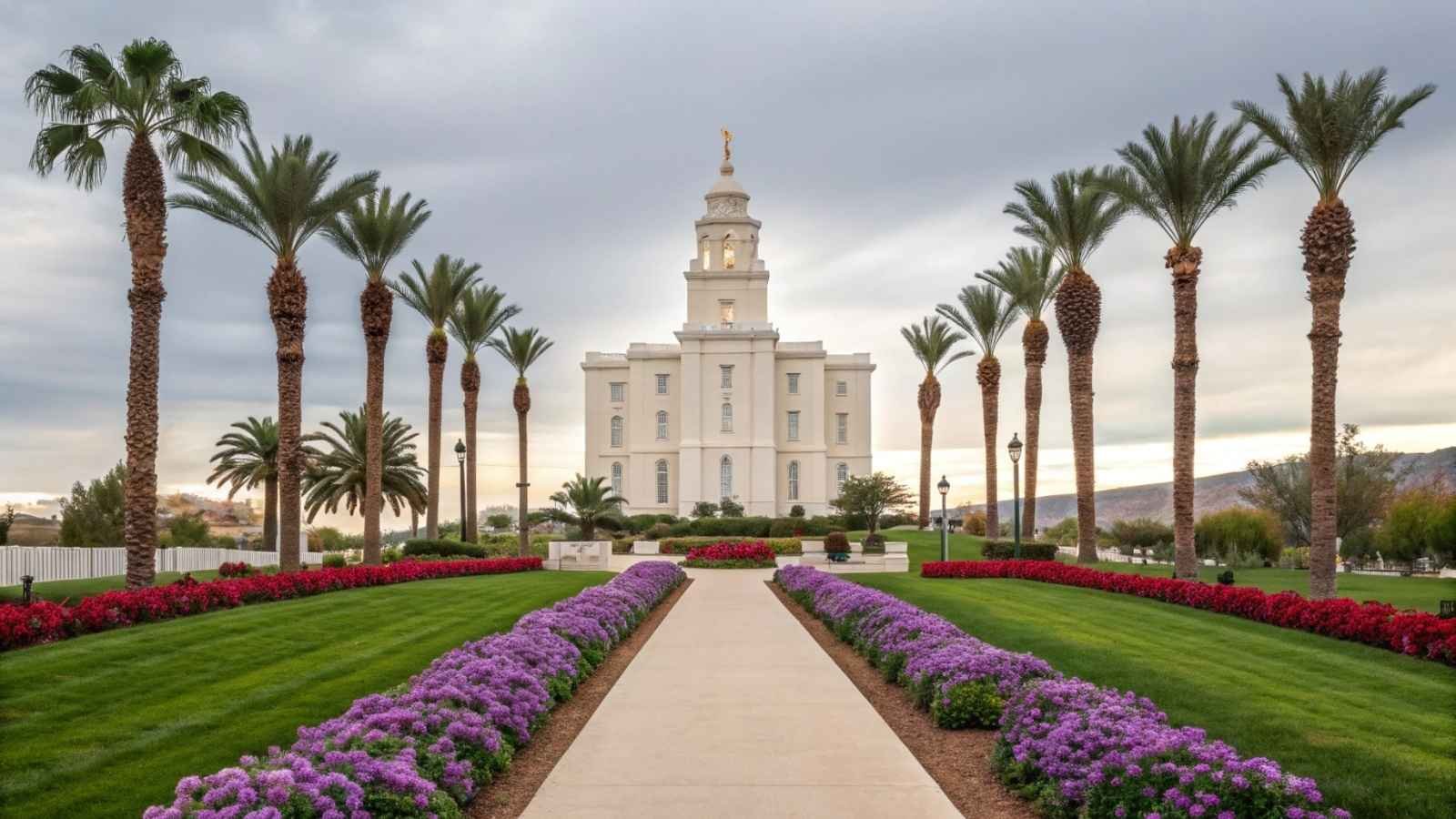
St. George feels like a desert dream that doesn’t come with desert prices. Set against red sandstone cliffs and clear blue skies, this southern Utah gem is one of those places where everyday life looks like a postcard. Yet despite its growing popularity, the cost of living remains below the national average, especially compared to other scenic towns in the West.
Residents love the year-round sunshine — more than 300 sunny days a year — and the endless outdoor options: hiking in Zion National Park, mountain biking the red-rock trails, or golfing in winter while much of the country is snowed in. The city has a laid-back pace but plenty of modern comforts, from art galleries to coffee spots tucked between canyon views.
St. George is also attracting remote workers and retirees who want beauty, warmth, and affordability in one package. You don’t need a massive budget to live well here — the landscape itself makes life feel luxurious.
Quick Facts:
- Best months to visit: March–May, September–November
- Average home price: Around $460,000
- Average rent: $1,400–$1,700
- Known for: Red-rock landscapes, sunny weather, and proximity to national parks
- Local tip: Visit Snow Canyon State Park — it’s just as breathtaking as Zion but without the crowds.
7. Spokane, Washington
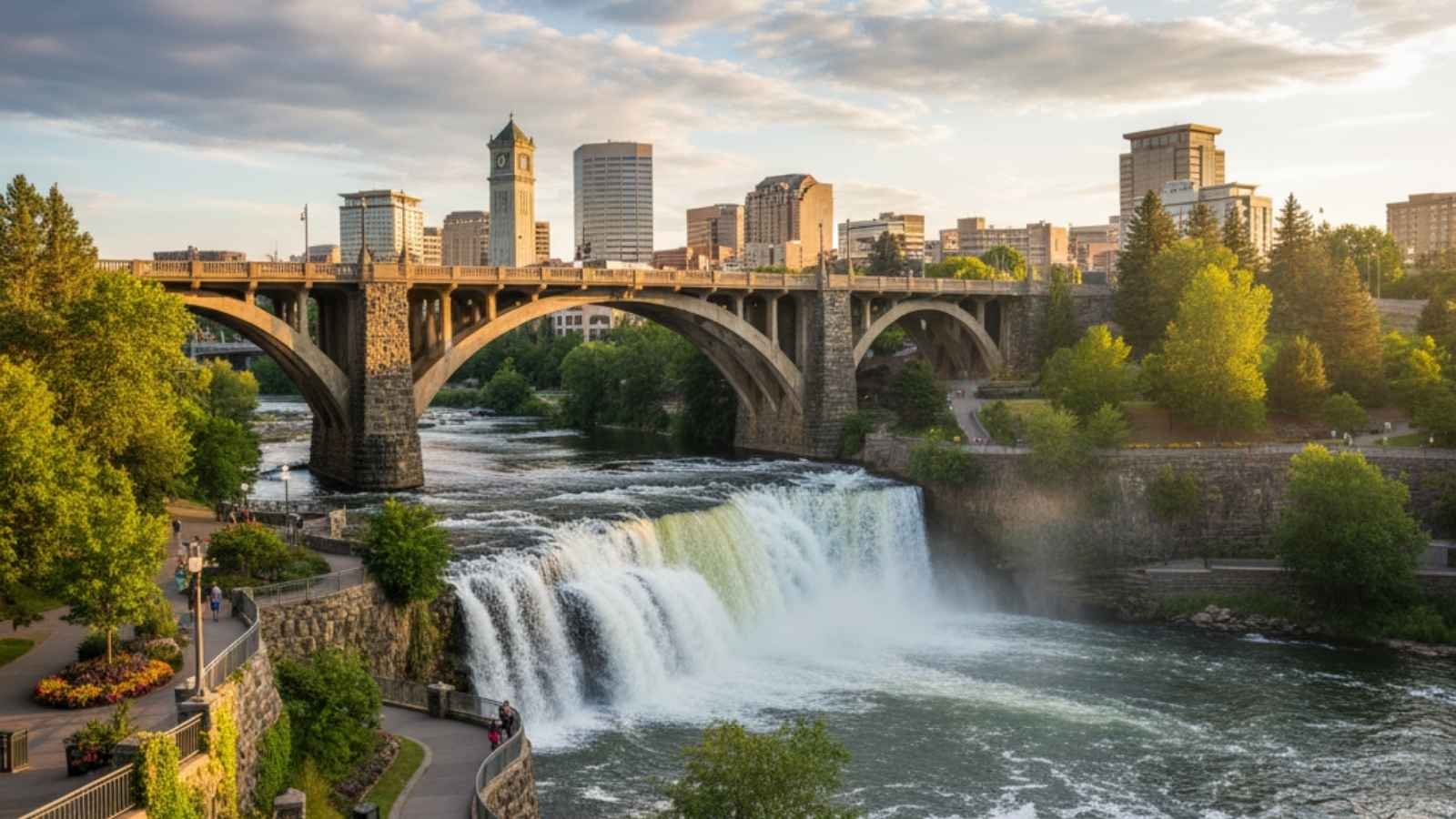
Spokane often flies under the radar, overshadowed by its flashier Pacific Northwest neighbors, but that’s exactly what keeps it affordable. The city has that PNW charm — rivers, pine forests, and a vibrant downtown — at nearly half the price of Seattle or Portland. With a cost of living about 15% below the national average, Spokane gives you access to mountain views and wine-country weekends without the high costs.
Downtown Spokane has evolved into a lively mix of historic architecture, local breweries, and coffee roasters. The Spokane River runs right through town, and its waterfalls add a natural soundtrack to city life. For outdoor lovers, there’s skiing, hiking, and lake-hopping — all within a short drive.
The best part? Spokane feels like a place where you can still afford to build a future — buy a home, start a business, and enjoy life without constant financial stress. It’s the Northwest experience, minus the hefty price tag.
Quick Facts:
- Best months to visit: May–September
- Average home price: About $380,000
- Average rent: $1,200–$1,400
- Known for: Riverfront parks, outdoor adventures, and affordable PNW living
- Local tip: Stroll through Riverfront Park at sunset — it’s one of the prettiest city walks in Washington.
8. Bentonville, Arkansas
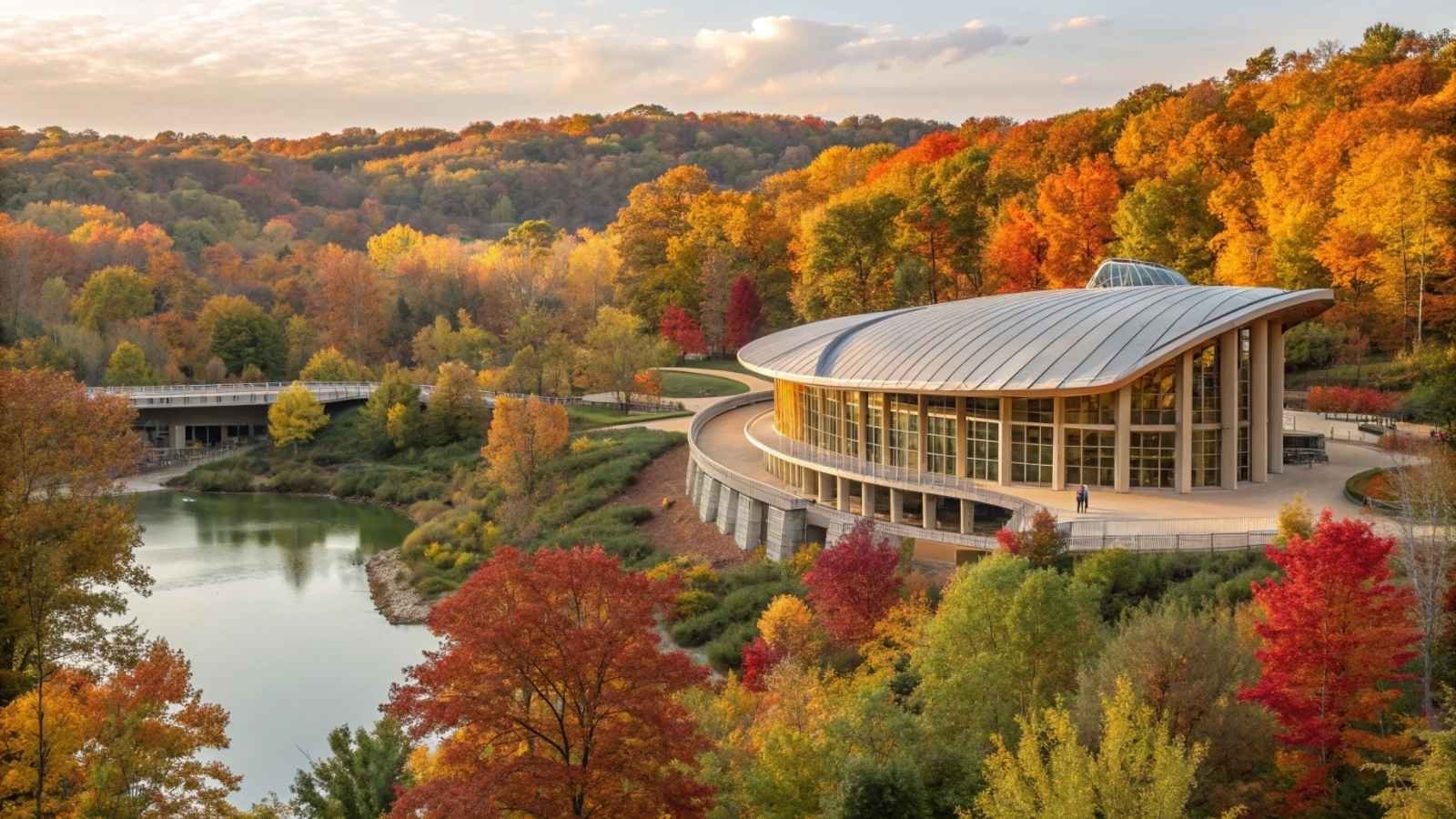
Once known mostly as the hometown of Walmart, Bentonville has evolved into one of the most unexpectedly cool and creative small towns in America. Thanks to major investment in the arts and community spaces, it now offers world-class museums, gourmet dining, and scenic bike trails — all while remaining highly affordable.
The Crystal Bridges Museum of American Art alone puts Bentonville on the map, but it’s the surrounding lifestyle that wins people over. Locals spend their weekends biking the Oz Trails or enjoying live music downtown, where modern design meets small-town friendliness. Despite rapid growth, housing and groceries remain 20–25% cheaper than in most mid-sized U.S. cities.
Bentonville feels like a preview of the future of small-town living — smart, sustainable, and surprisingly sophisticated, all wrapped in Southern hospitality.
Quick Facts:
- Best months to visit: April–May, September–October
- Average home price: Around $350,000
- Average rent: $1,300–$1,500
- Known for: Art scene, bike trails, and strong community investment
- Local tip: Visit the Momentary, a contemporary art space inside a converted factory — it’s a local favorite.
9. Roanoke, Virginia
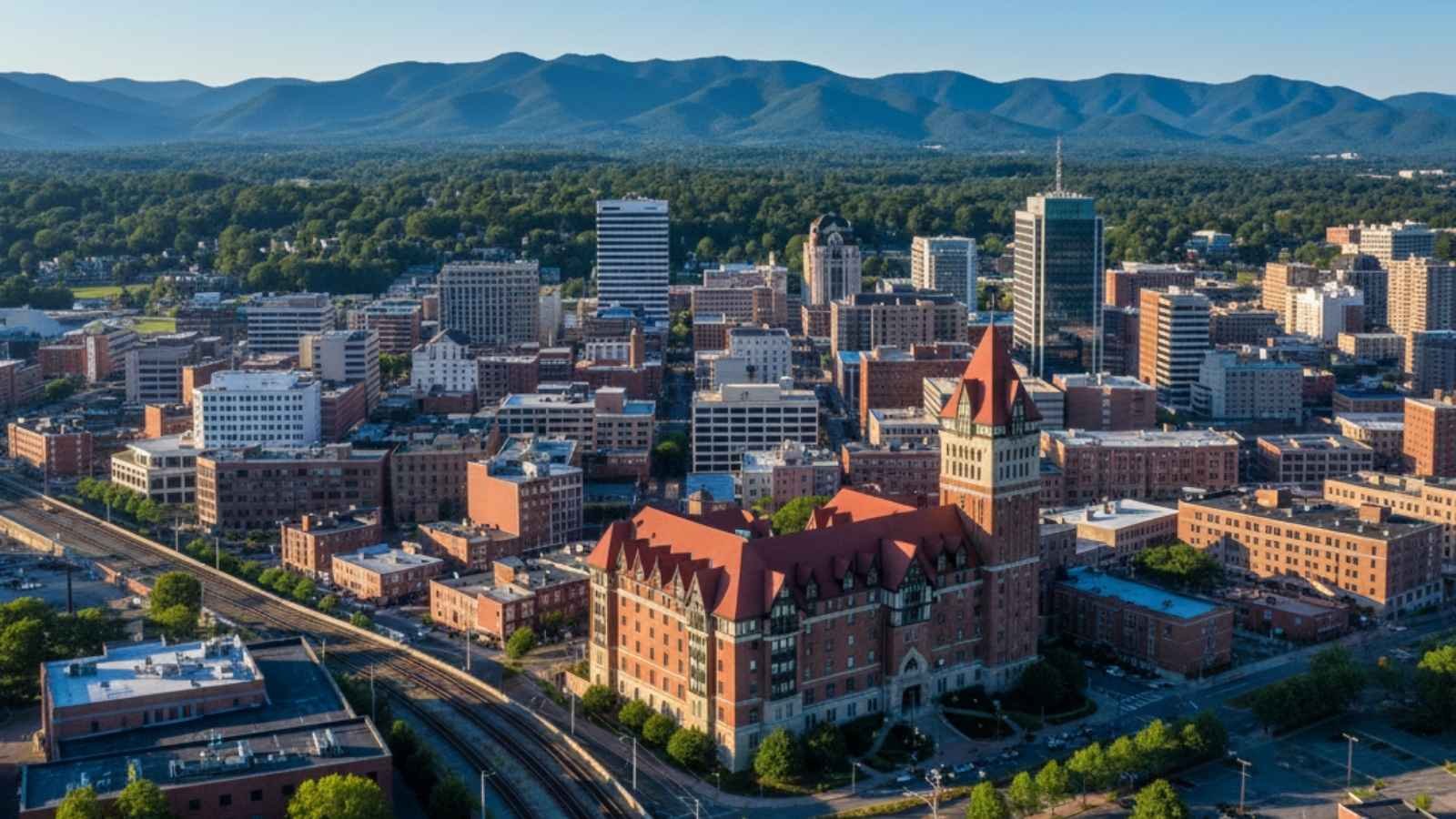
Roanoke sits in a valley surrounded by the Blue Ridge Mountains — a mountain town with small-city energy and down-to-earth prices. It’s the kind of place where you can grab a craft beer after a hike and still make it home before sunset. The cost of living here is roughly 15% below the national average, with housing being particularly affordable.
The downtown market district is lively but not overwhelming — think farmers’ markets, art walks, and cozy cafés. The nearby Blue Ridge Parkway offers some of the best scenic drives in America, and locals often take advantage of the endless trails for hiking, biking, or even quiet weekend camping.
Roanoke blends outdoor adventure with creative culture, giving residents the freedom to live richly on a modest budget. You can own a home, enjoy mountain views, and still have enough left over for travel or hobbies — that’s real wealth.
Quick Facts:
- Best months to visit: April–June, September–October
- Average home price: About $300,000
- Average rent: $1,100–$1,300
- Known for: Mountain scenery, local markets, and a strong sense of community
- Local tip: Drive or bike up Mill Mountain to see the famous Roanoke Star and a stunning city view.
10. Traverse City, Michigan
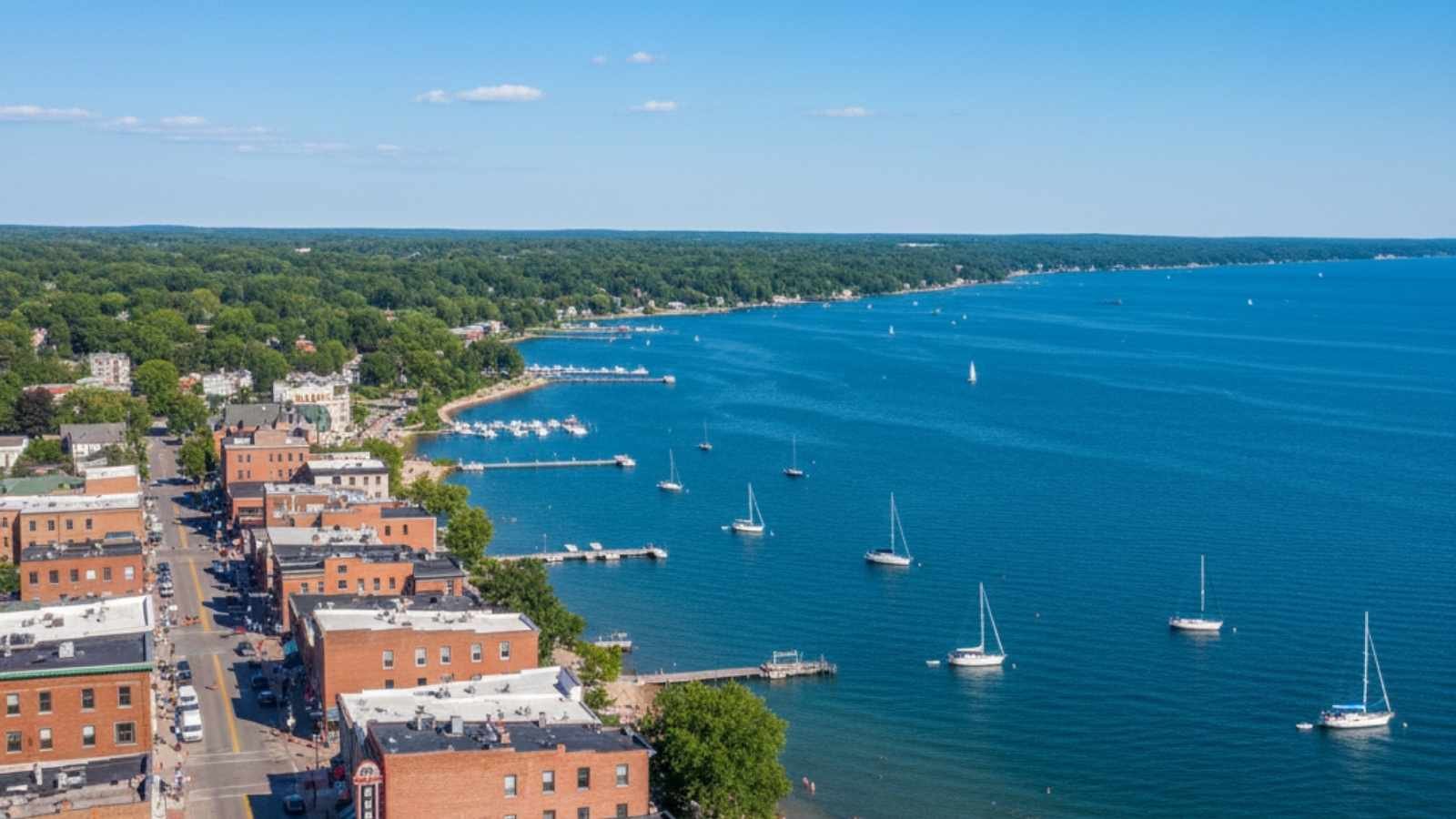
Traverse City is one of those places that makes you rethink what small-town living can be. Set along Lake Michigan’s turquoise waters, it’s as beautiful as any coastal destination — but at a fraction of the cost. Known for its cherry orchards, wineries, and waterfront lifestyle, this town offers affordable luxury without the pretense.
Summers here are pure magic: beach days, vineyard picnics, and local festivals under warm evening skies. Winters are cozy, with snow-covered cottages and a thriving arts scene that keeps things lively year-round. Despite its popularity, you can still find housing and daily expenses 10–15% below the national average, which is remarkable for a town this scenic.
Traverse City offers the best of both worlds — the calm of lakeside living and the culture of a much larger city. It’s the kind of place where slowing down feels natural, not like settling.
Quick Facts:
- Best months to visit: June–September
- Average home price: Around $420,000
- Average rent: $1,400–$1,600
- Known for: Beaches, wineries, and waterfront living
- Local tip: Visit in early July for the National Cherry Festival — it’s as charming as it sounds.
11. Huntsville, Alabama
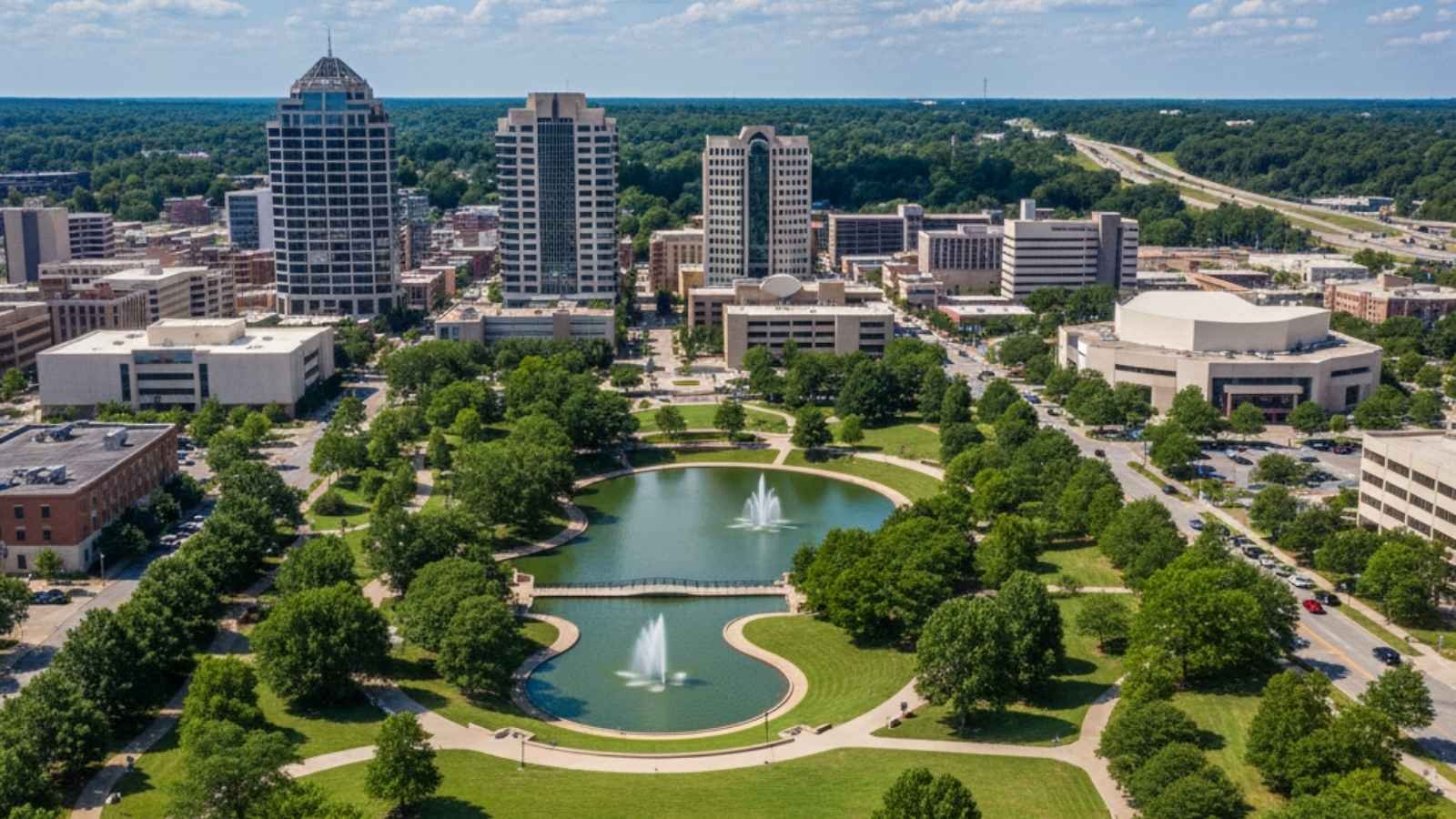
Huntsville is the rare city where rocket science meets Southern hospitality — literally. Nicknamed “Rocket City,” it’s a hub for aerospace and tech innovation but still manages to stay affordable, relaxed, and community-driven. The cost of living here is about 18% below the national average, and salaries — especially in STEM fields — go impressively far.
Beyond its NASA roots, Huntsville has grown into a genuinely livable and creative city. Downtown has an exciting mix of craft breweries, outdoor music venues, and urban parks, while the nearby Monte Sano trails offer peaceful forest escapes just minutes from downtown. It’s the kind of place where you can work in tech by day and stargaze in your backyard at night.
More than anything, Huntsville feels balanced — smart, scenic, and surprisingly soulful, with locals who are as proud of their barbecue as they are of their space program.
Quick Facts:
- Best months to visit: March–May, September–November
- Average home price: Around $320,000
- Average rent: $1,200–$1,400
- Known for: Aerospace industry, low living costs, and family-friendly vibe
- Local tip: Check out the U.S. Space & Rocket Center — it’s both fascinating and oddly humbling.
12. Colorado Springs, Colorado
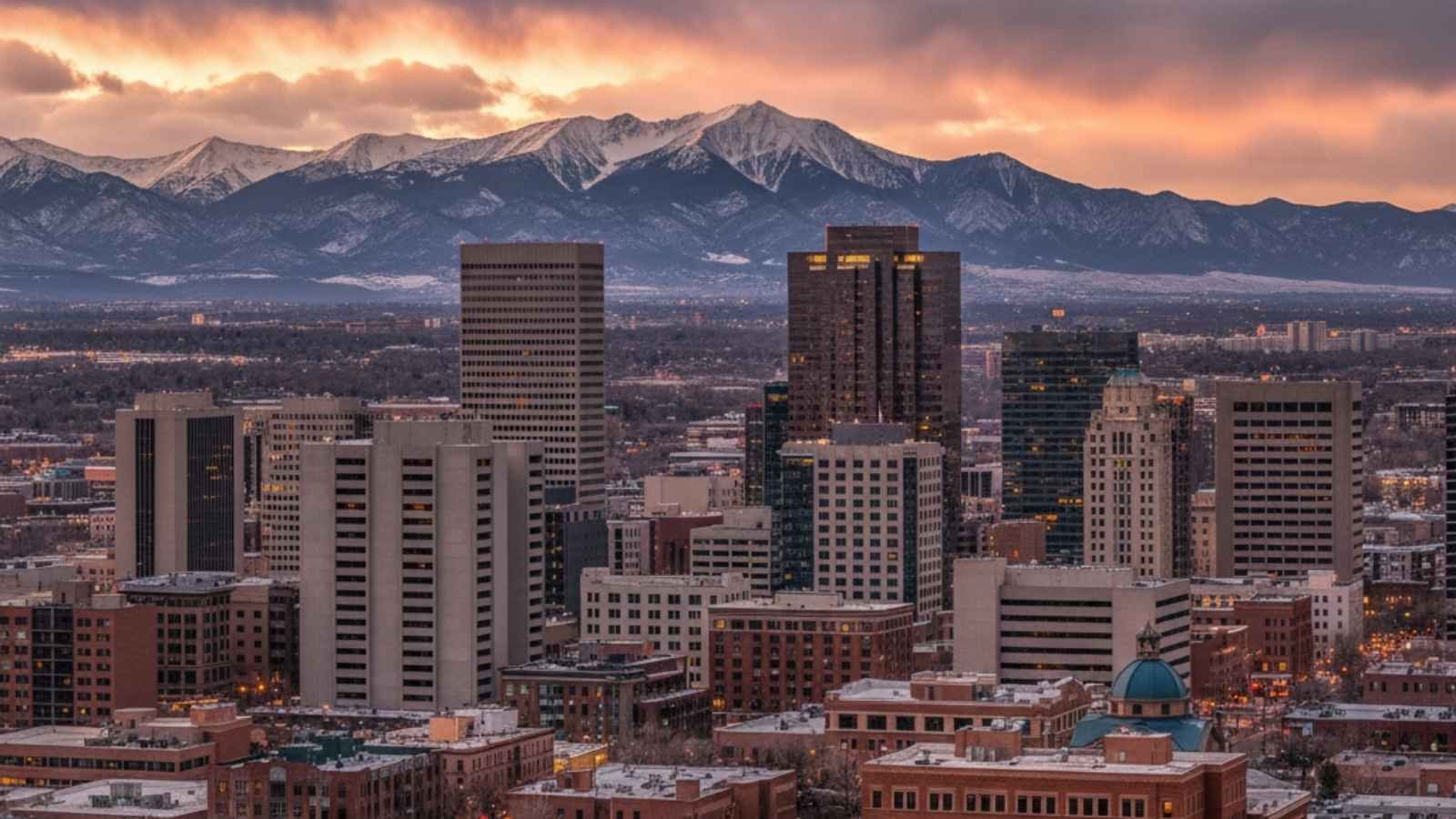
Colorado Springs delivers the mountain-town dream without the Denver-level prices. With the majestic Pikes Peak towering in the backdrop and hiking trails in nearly every direction, this city blends adventure with everyday livability. Housing costs are lower than Denver’s by 25–30%, and there’s no shortage of views that make life here feel like a getaway.
Locals love that they can ski in winter, hike in summer, and still find affordable family homes or cozy apartments with mountain views. The city is also home to an emerging arts scene, great schools, and a growing community of remote workers who’ve traded urban sprawl for sunshine and space.
Colorado Springs proves that you don’t have to sacrifice nature or opportunity to save money — here, you get both in generous supply.
Quick Facts:
- Best months to visit: May–September
- Average home price: About $470,000
- Average rent: $1,500–$1,700
- Known for: Mountain access, family living, and an active lifestyle
- Local tip: Don’t skip Garden of the Gods — free entry, unforgettable views.
13. Asheville, North Carolina
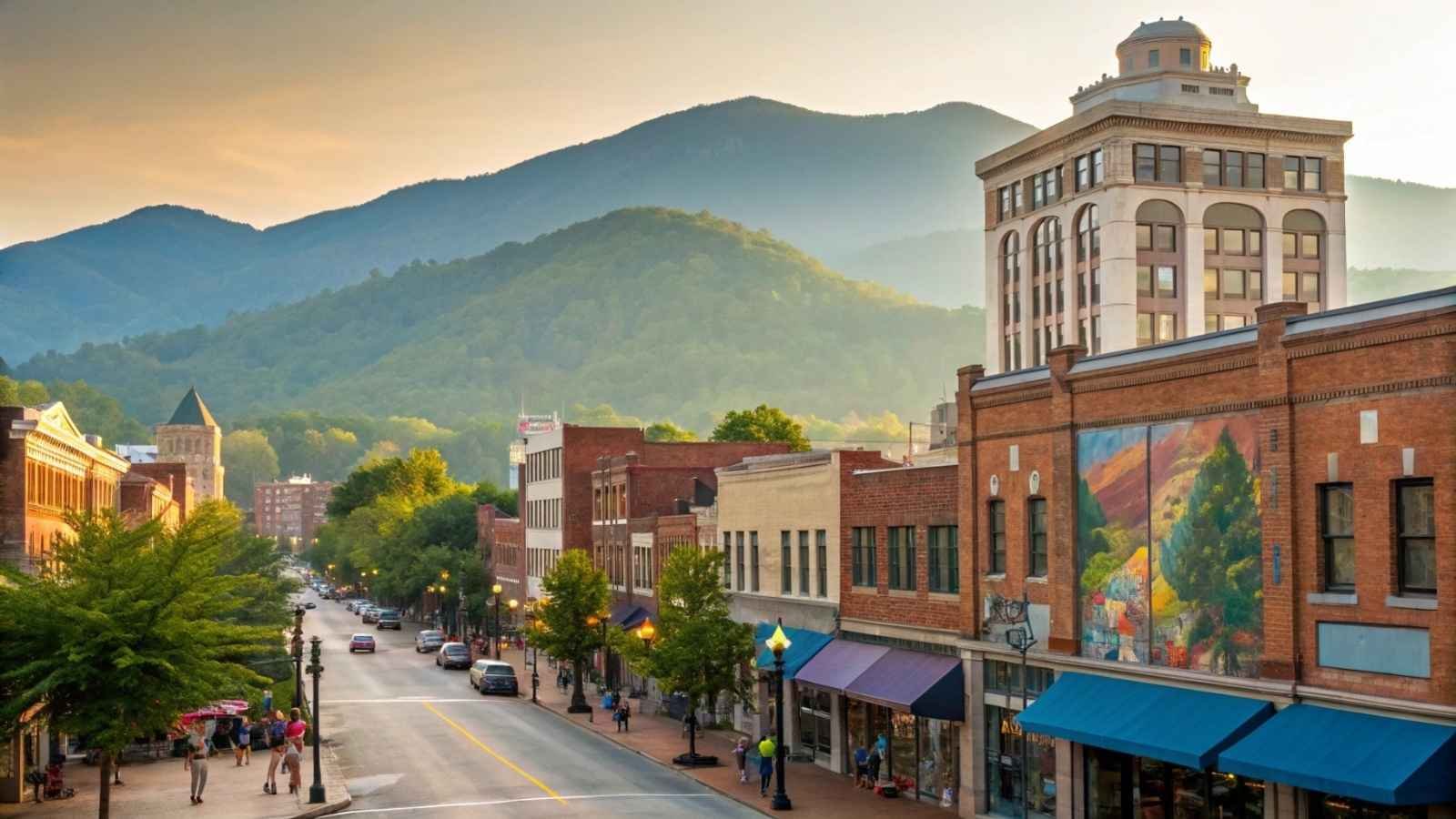
Asheville is a creative haven tucked in the Blue Ridge Mountains, where affordability meets artistry. Known for its bohemian vibe, live music, and mountain energy, it’s a place that inspires both artists and outdoor lovers alike. While housing costs have risen, the overall cost of living remains below national averages, and the quality of life makes every dollar feel doubled.
There’s always something happening — local food festivals, street performers downtown, or spontaneous gatherings at breweries that line the River Arts District. Step outside the city, and you’re minutes from waterfalls, hiking trails, and scenic drives that look straight out of a painting.
Asheville isn’t just affordable; it’s soulful — a place where creativity flows as easily as the mountain air and your dollar stretches into experiences money can’t quite buy.
Quick Facts:
- Best months to visit: April–June, September–October
- Average home price: About $450,000
- Average rent: $1,400–$1,700
- Known for: Art, music, and mountain scenery
- Local tip: Visit early fall — fewer tourists, more color in the hills.
14. Cedar City, Utah
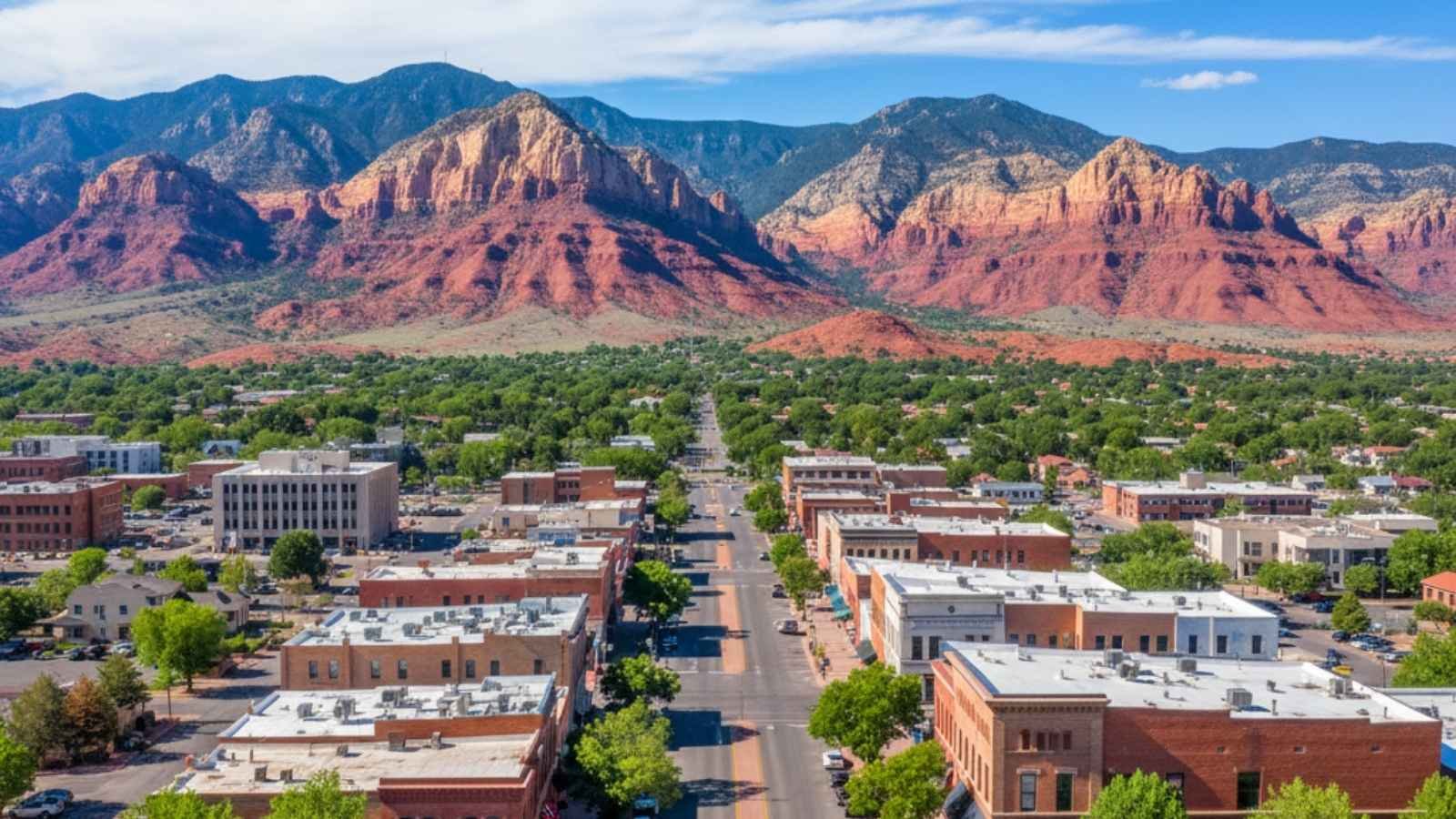
Cedar City doesn’t make a lot of national “best-of” lists — and that’s part of its charm. It’s quiet, scenic, and deeply affordable, sitting just a short drive from both Zion and Bryce Canyon National Parks. Locals enjoy dramatic red-rock views and small-town simplicity, all while living on budgets that would barely cover rent in major cities.
It’s also known as Utah’s Festival City, home to the annual Shakespeare Festival and a growing community of creatives, educators, and outdoor adventurers. With clean air, open skies, and a real sense of community, Cedar City makes “simple living” feel like a luxury.
The mix of affordability and access to world-class scenery makes this one of the best-kept secrets in the Southwest — a hidden gem for those seeking both peace and possibility.
Quick Facts:
- Best months to visit: May–June, September–October
- Average home price: Around $310,000
- Average rent: $1,100–$1,300
- Known for: Festivals, red-rock landscapes, and small-town community
- Local tip: Catch a play at the Utah Shakespeare Festival — it’s a local tradition.
15. Coeur d’Alene, Idaho
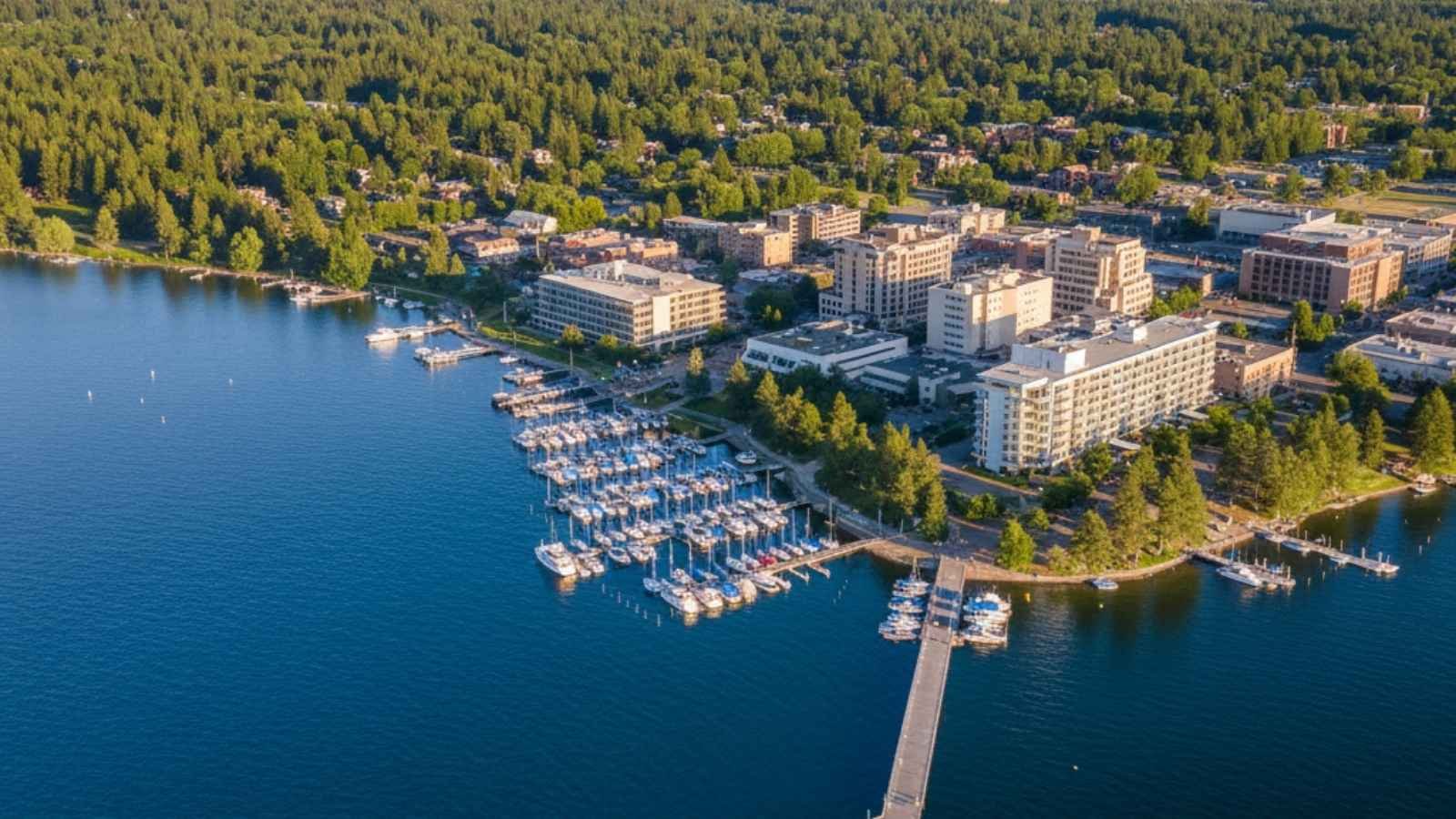
Few small towns have as much natural charm as Coeur d’Alene. With a pristine lake surrounded by pine-covered mountains, it looks like a scene from a postcard — yet it’s still surprisingly affordable for the beauty it delivers. The cost of living is slightly below average, and outdoor recreation here feels endless.
Summer brings boaters, kayakers, and beachgoers to the sparkling lake, while winter transforms the area into a snowy retreat. Downtown is lively but not crowded, offering independent cafés, lakeside dining, and a strong sense of community that draws both retirees and young families.
Coeur d’Alene proves that you don’t need a millionaire’s budget to live like one — here, the scenery does the heavy lifting.
Quick Facts:
- Best months to visit: June–September
- Average home price: About $520,000
- Average rent: $1,400–$1,700
- Known for: Lake life, outdoor sports, and cozy mountain-town atmosphere
- Local tip: Take the Tubbs Hill hike — it’s short, easy, and has unbeatable lake views.
16. Pensacola, Florida
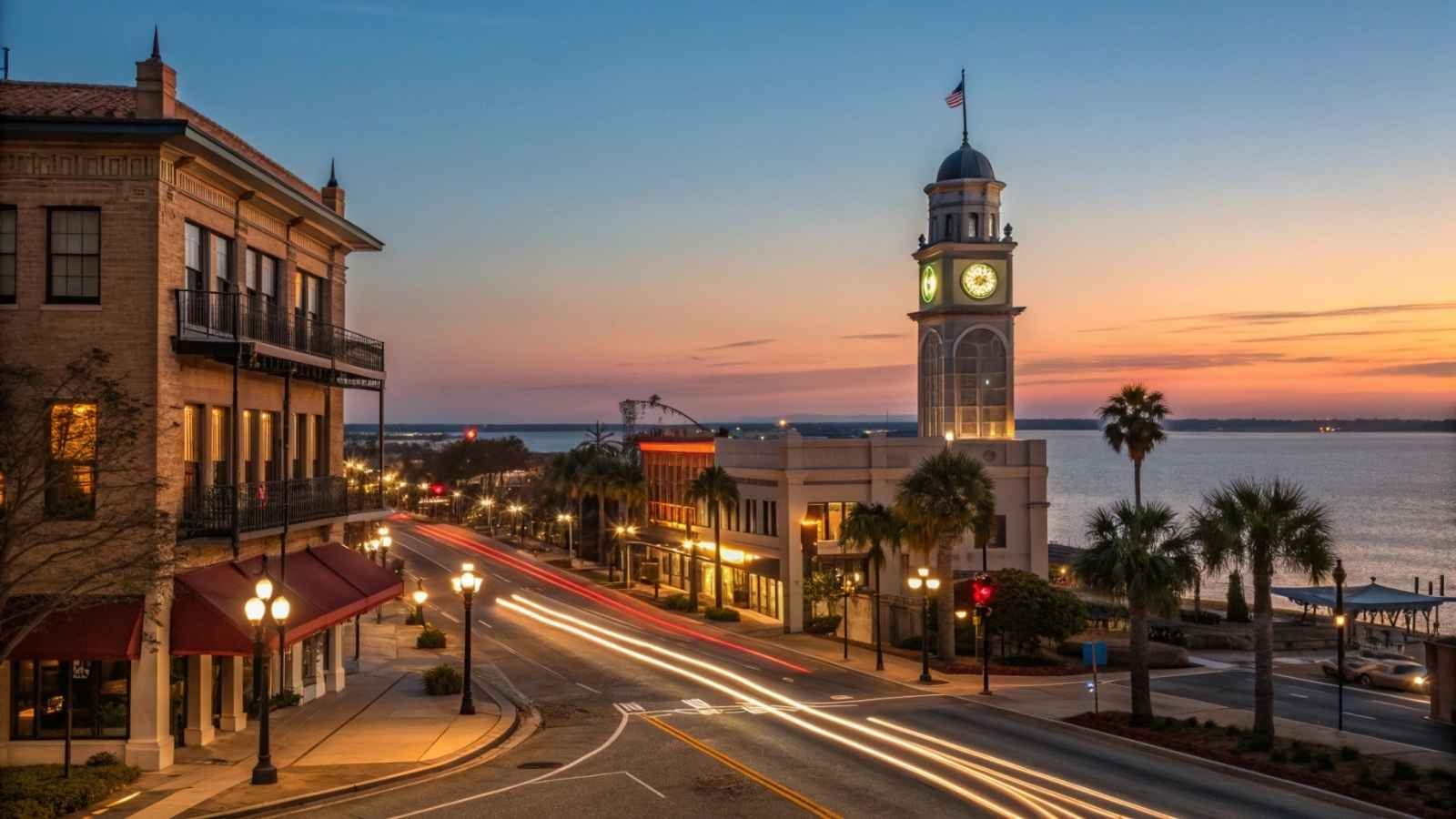
Pensacola is where Gulf Coast living meets affordability. Unlike many Florida beach towns that have priced out locals, Pensacola keeps things refreshingly reasonable — housing costs hover around 20% below the national average, yet the white-sand beaches are as beautiful as any in the state.
The historic downtown has a coastal charm with just enough nightlife to keep it lively without losing that easygoing rhythm. From kayaking in the bay to walking through the colorful Palafox Market, life here moves at a pace that makes you actually enjoy your days off.
Pensacola strikes a perfect balance — affordable coastal living with real local character, where your money stretches as far as the horizon.
Quick Facts:
- Best months to visit: April–June, September–November
- Average home price: About $350,000
- Average rent: $1,300–$1,600
- Known for: White-sand beaches, historic charm, and laid-back vibe
- Local tip: The beaches on Perdido Key are less crowded and every bit as stunning.
17. Eureka Springs, Arkansas
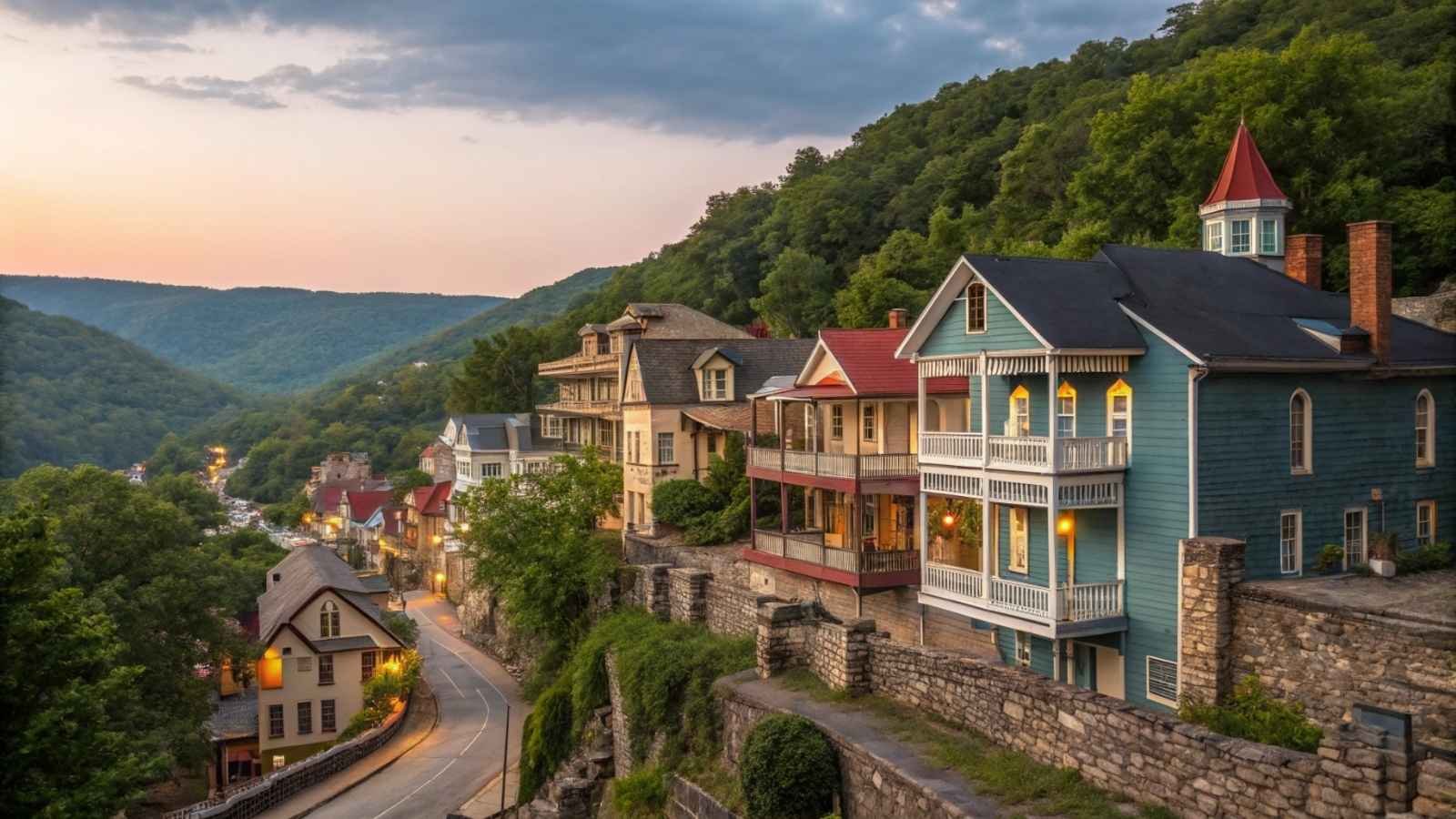
Eureka Springs feels like stepping into another era — cobblestone streets, Victorian houses, and winding hills surrounded by Ozark forests. But beneath its quaint charm lies a creative, eclectic community that thrives on art, music, and open-minded living. And yes, it’s still incredibly affordable, with housing and food costs among the lowest in the region.
What really stands out is how this town seems to attract free spirits — artists, writers, and small business owners who value authenticity over status. The downtown area is full of locally owned shops and hidden cafés that give it a storybook feel that’s genuine, not staged.
Eureka Springs is the kind of place where everyday life feels like a slow-motion scene worth savoring, proof that low cost doesn’t mean low quality.
Quick Facts:
- Best months to visit: April–June, September–October
- Average home price: Around $290,000
- Average rent: $1,000–$1,300
- Known for: Victorian architecture, artsy community, and Ozark scenery
- Local tip: Wander the hidden staircases between downtown streets — they reveal some of the town’s best views.


